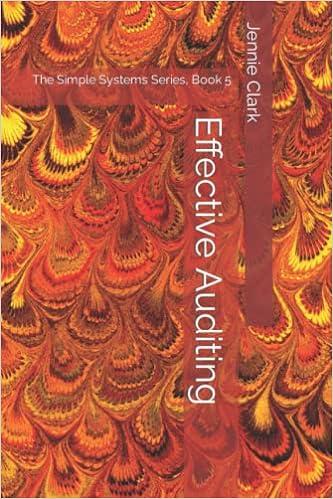Question
Robert Porter tried to withdraw $100 from his Citibank checking account at an automated teller machine. When no money was dispensed from the machine after
Robert Porter tried to withdraw $100 from his Citibank checking account at an automated teller machine. When no money was dispensed from the machine after Porter had pushed the necessary buttons, he reported the incident to a bank official. A few weeks later, Porter tried to withdraw $200. When no money appeared after two tries, he again reported the problem to a bank official. As a result of these two incidents, Porter's next bank statement showed one withdrawal of $100 and two of $200 each. Porter filed a lawsuit against the bank to recover the $500 debit on his checking account for cash he never received. At the trial, bank employees testified that the cash machines were out of balance once or twice a week on average. In addition, they testified, at times a subsequent machine user received cash that properly belonged to the prior user of a machine. Also, at the trial, Porter was found to be a credible witness. The court most likely held that Porter could: a. not recover $500 from Citibank, because there was no way to prove that he did not receive the cash. b. recover $500 from Citibank, because he notified the bank of the error immediately so that it had an opportunity to make the correction. c. not recover $500 from Citibank, because there was no evidence of a machine malfunction. d. recover $500 from Citibank, because under the Electronic Fund Transfer Act (EFTA), banks are liable for up to that amount if an ATM malfunctions.
Step by Step Solution
There are 3 Steps involved in it
Step: 1

Get Instant Access to Expert-Tailored Solutions
See step-by-step solutions with expert insights and AI powered tools for academic success
Step: 2

Step: 3

Ace Your Homework with AI
Get the answers you need in no time with our AI-driven, step-by-step assistance
Get Started


